By Chris (Blumer) Spangler
The Summer Olympics have crossed the finish line, but I’d like to take a look back at one female gymnast.
No, not Simone Biles, Suni Lee or Jade Carey, but Marie (Blumer) Hoesly Herbert.
The Monroe, Wis., native was one of my father, Fred Blumer Jr.’s, five sisters. At age 35, she was on the United States women’s gymnastics team that competed in the 1952 Olympics in Helsinki, Finland.
First, a little family history. My dad’s father emigrated from Switzerland in 1900 and married the daughter of his landlords, also Swiss immigrants. As you might know, the Swiss are into Schwingen, a type of wrestling, as well as bodybuilding and gymnastics, and my dad and his siblings were regulars at Monroe’s Turn and Schwing Club, which trained at Turner Hall.
Family photos show lean, muscular bodies on the parallel bars, rings and balance beam. Many of my cousins inherited those talented genes, including one who coached the women’s gymnastics team at Ohio State. Unfortunately, all I got were the broad shoulders.
Anyway, Aunt Marie grew up with the Monroe Turners and later joined the Madison Turners, practicing three times per week. For 20 years, she competed with this group in National Amateur Athletic Union (NAAU) gymnastics around the country, winning 16 championships.
Her first husband, Mark Hoesly, was a weightlifter, professional wrestler and gymnast himself. Inside and outside the barn of their farm just south of Monroe were gymnastics apparatus — including rings, pommel horse, balance beam and parallel bars — on which Aunt Marie and Uncle Mark both trained.
In fact, they used to do aerial exhibitions in which Uncle Mark would hold a pole with Aunt Marie balanced on top doing handstands and acrobatics. They even were courted by the Barnum & Bailey Circus, but they didn’t want to travel a lot, so they declined.
My mom told me that Aunt Marie — who was rather introverted and shy — was encouraged by Uncle Mark to try out for the Olympics. She made alternate on the USA women’s gymnastics team for the 1948 Olympics in London, and then trained even harder to win a spot to compete in Helsinki four years later.
Now, there is some interesting trivia regarding the 1952 Games.
The head coach was Roberta Ranck Bonniwell, a shoe-in for the 1936 Olympics in Berlin until she tore the cartilage in her left knee. It is speculated that she would have been a serious contender for the 1940 Tokyo Games had they not been canceled due to World War II. Shortly after Helsinki, one of three Olympics she coached women’s gymnastics, Bonniwell was diagnosed with multiple sclerosis. She is believed to have been responsible for the first class of women in the U.S. Gymnastics Hall of Fame in 1974.
Trivia No. 2: Along with vault, balance beam and floor exercise, women competed on parallel bars at the 1938 World Championships. By the 1950 Worlds, the parallel bars had become the uneven parallel bars, retaining the slightly oval shape of the men’s event. The women’s program crystallized at the 1952 Games, where vault, uneven bars, balance beam and floor exercise were contested.
They also competed in Team Portable Apparatus, in which the women together performed a floor exercise while holding balls, clubs or hoops. This was dropped after the 1956 Olympics, though rhythmic gymnastics did become an Olympic sport in its own right in 1984.
In addition, the 1952 Olympics were the first where individual medals were given.
And it marked the first time that the Soviet Union ever competed in the modern Games … and they came to win. Maria Gorokhovskaya captured two gold medals and five silver medals, including the inaugural women’s artistic gymnastics individual all-around competition. The Soviet Union also won the team competition with ease, beginning a 40-year streak that continued until the Soviet Union dissolved. Hungary and Czechoslovakia also stood on the podium.
The Americans did not fare as well, although Aunt Marie did place sixth in the women’s all-around. On her bedroom wall hung a cherished participation medal given to her by the British, however.
In 1956, she was an alternate for the Olympics in Melbourne, Australia. By then, she was 39!
Not one to toot her own horn, Aunt Marie didn’t talk much about her Olympics experience. But once when I asked about her team, she responded, “well, those young girls didn’t know how to work hard!”
Well, at least not as hard as Aunt Marie.
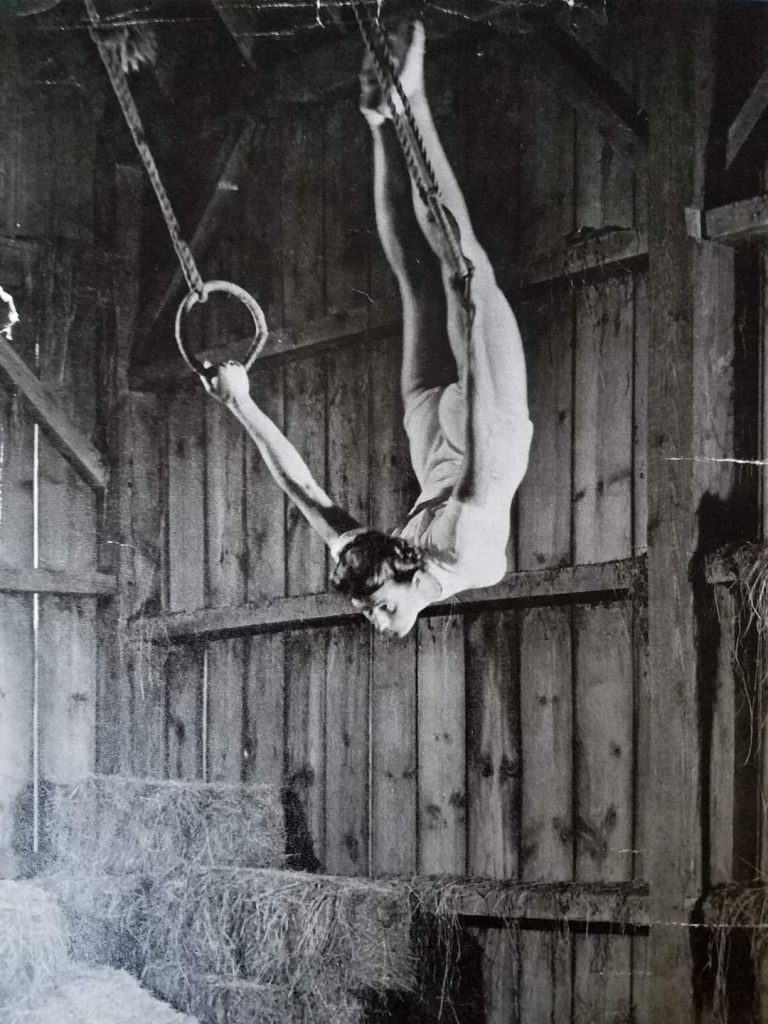
Marie Hoesly practices on the rings at her gymnasium in the barn at her farm south of Monroe in the 1950s. Before 1952, women competed in an Olympics event called the Flying Rings, but the event was eliminated from the competition.
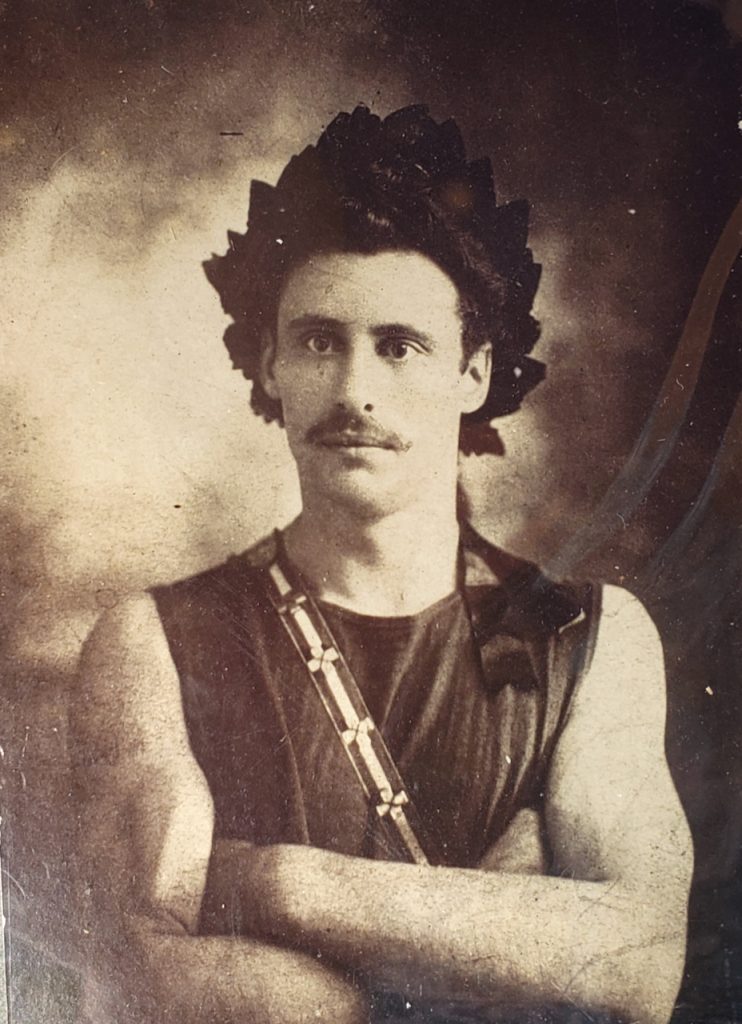
Fred A. Blumer, author Chris (Blumer) Spangler’s paternal grandfather, wears a wreath on his head as the winner of a Swiss athletic competition. Blumer was a wrestler and gymnast who emigrated from Switzerland to Monroe, Wis., in 1900.
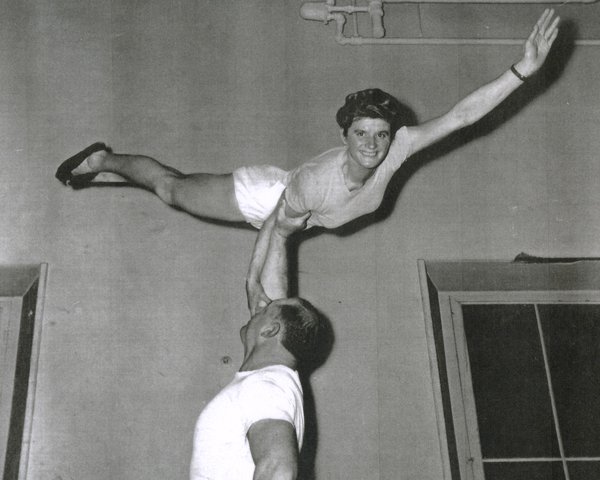
Mark Hoesly, first husband of Marie (Blumer) Hoesly, who also was a weightlifter, professional wrestler and gymnast, holds his wife, demonstrating acrobatic skills.
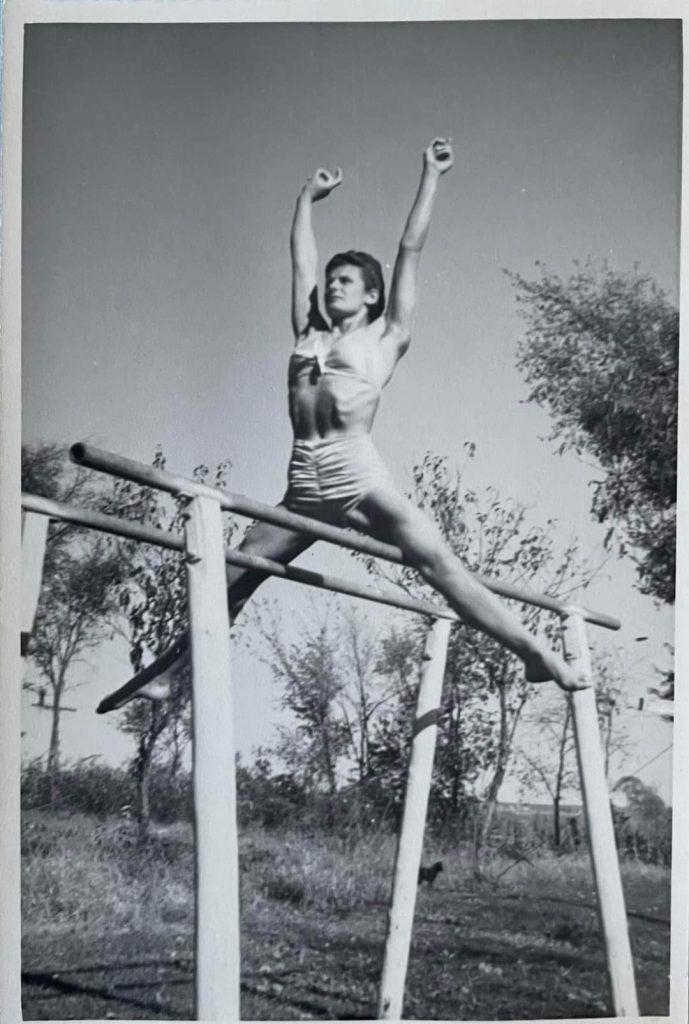
Marie (Blumer) Hoesly demonstrates skills on the parallel bars. The bars were closer together than they are today, and since the late 1950s, women use the uneven parallel bars instead.
Photos contributed by the Spangler family.
This post has already been read 2888 times!
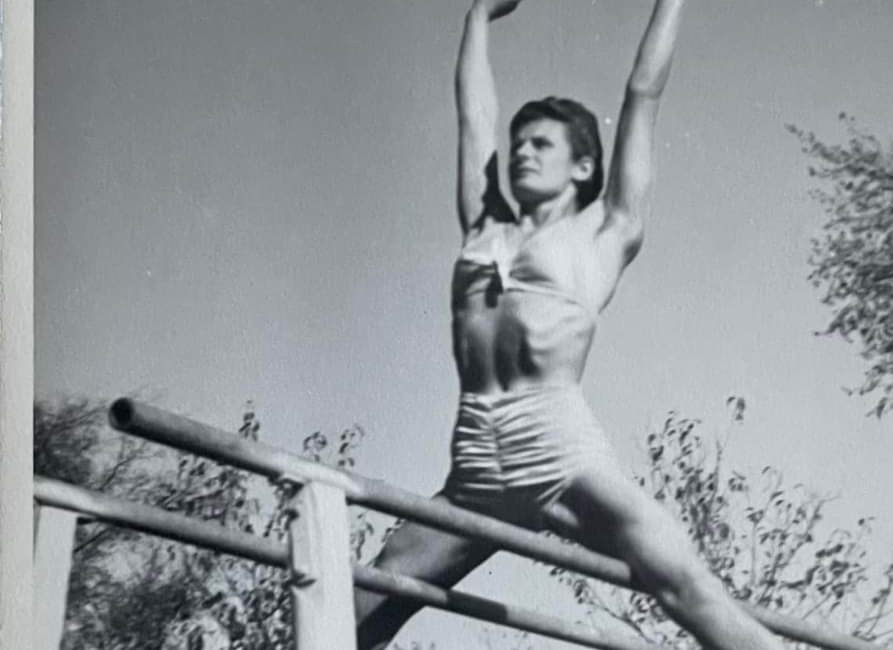
What a great family story! Marie was certainly an amazing woman. She was way ahead of her time.